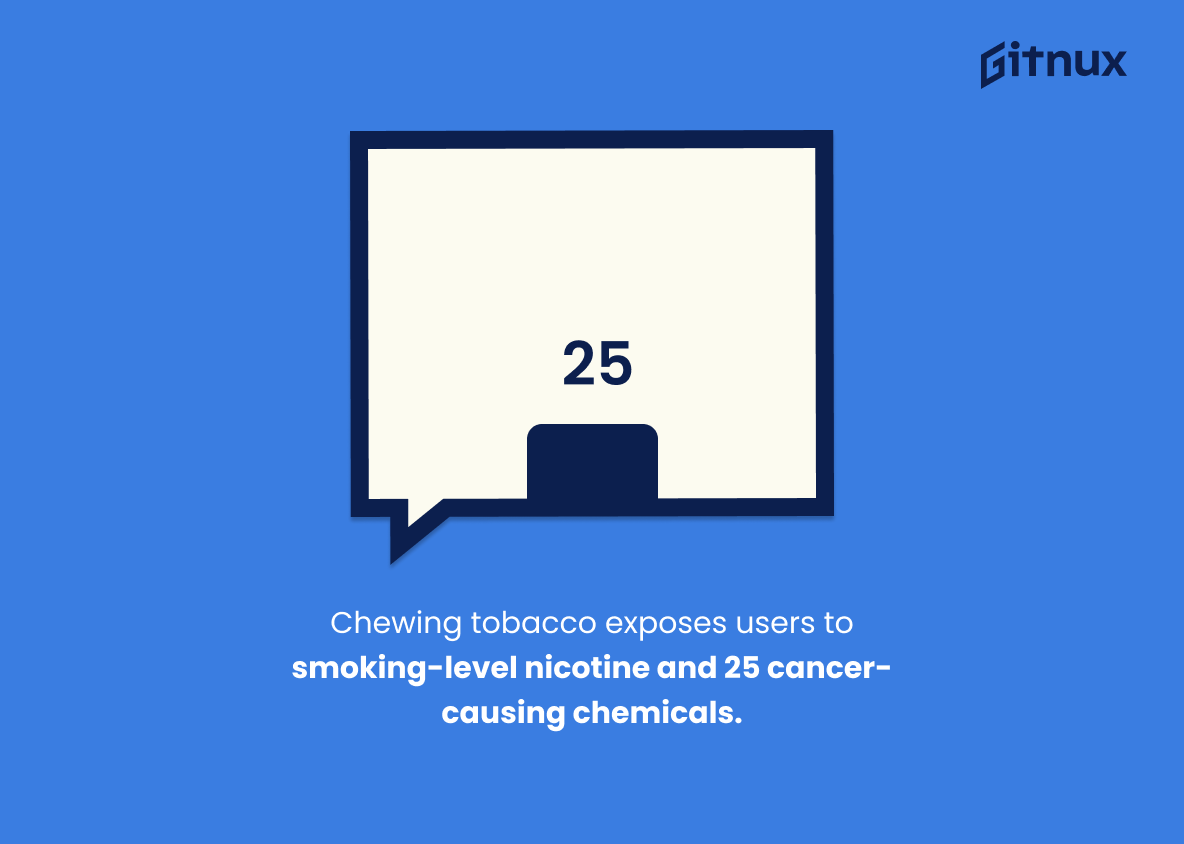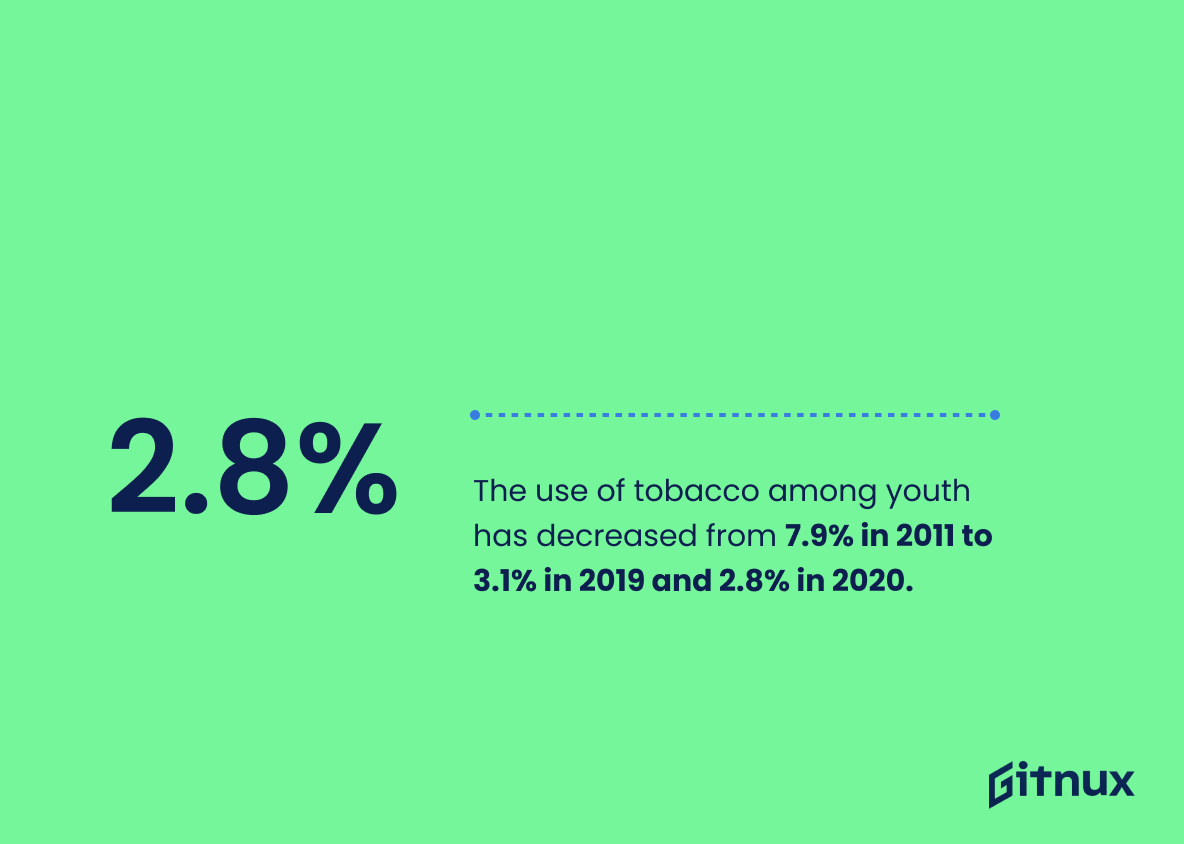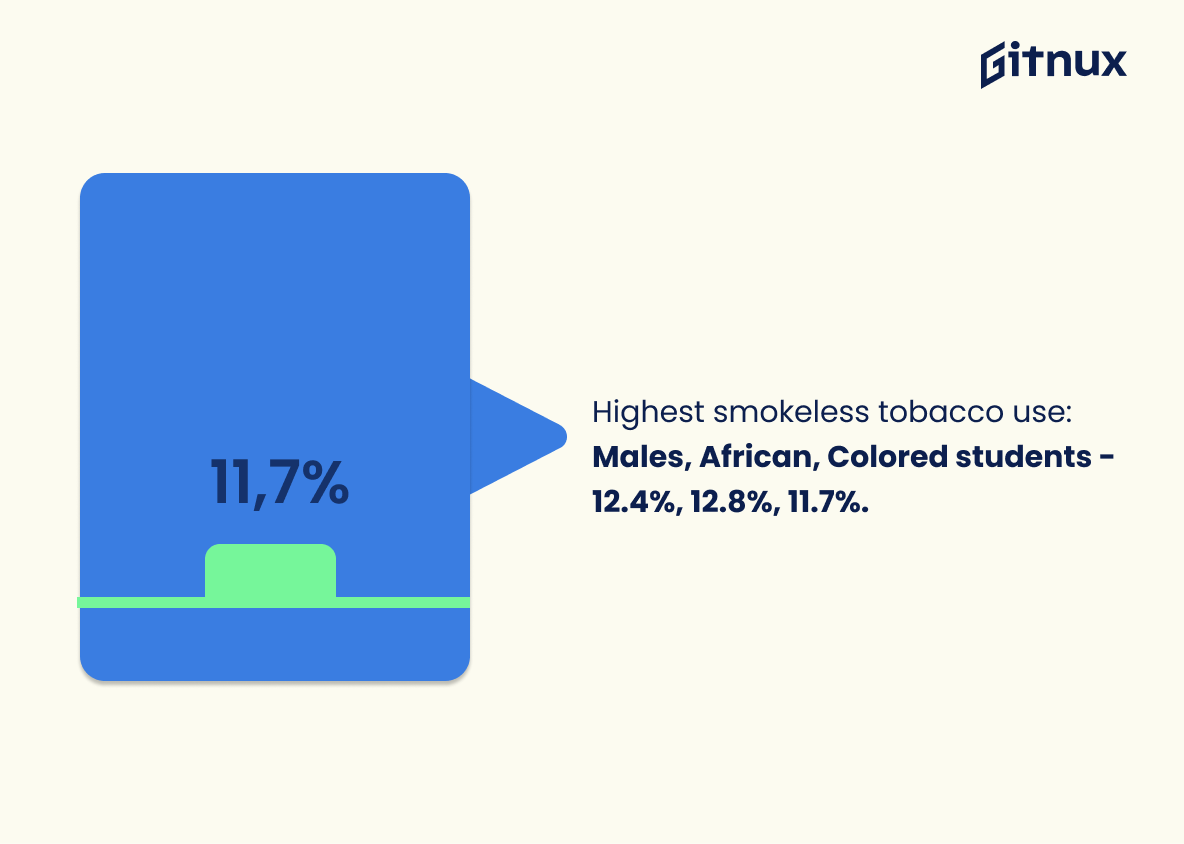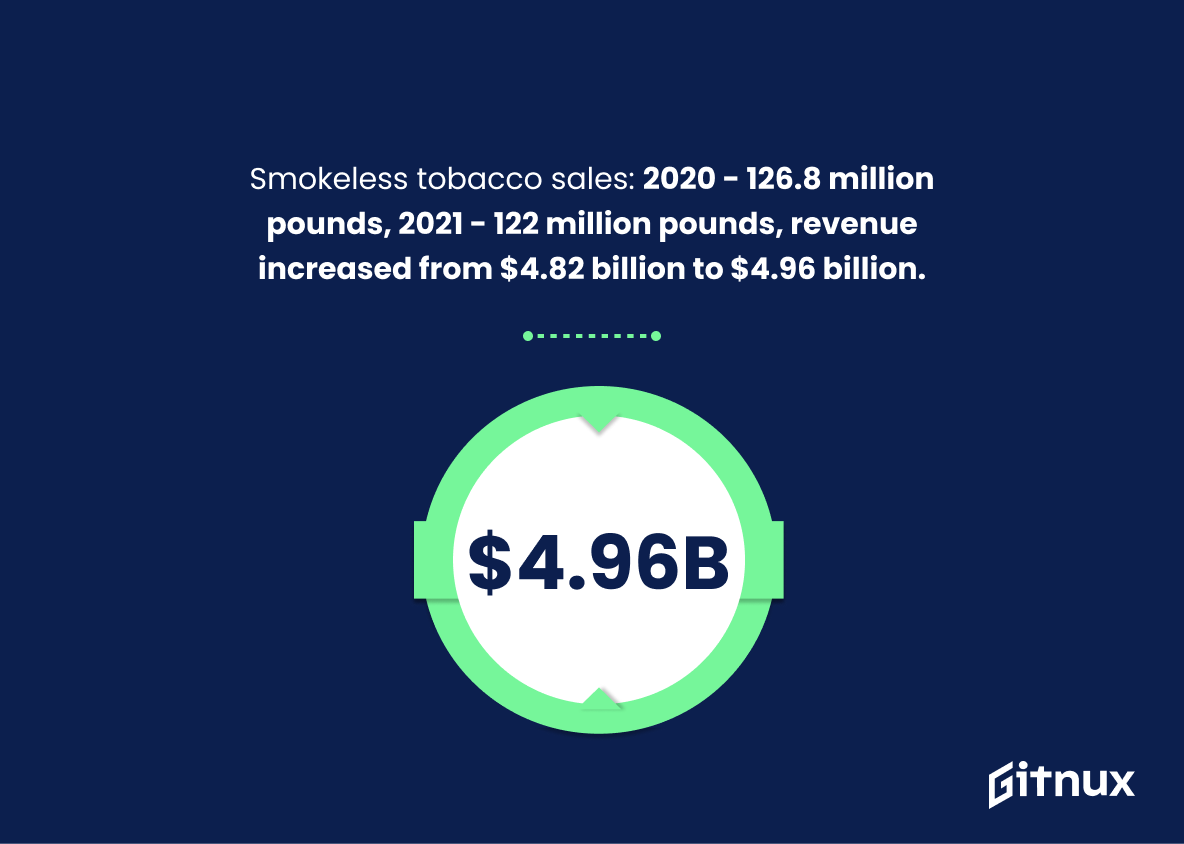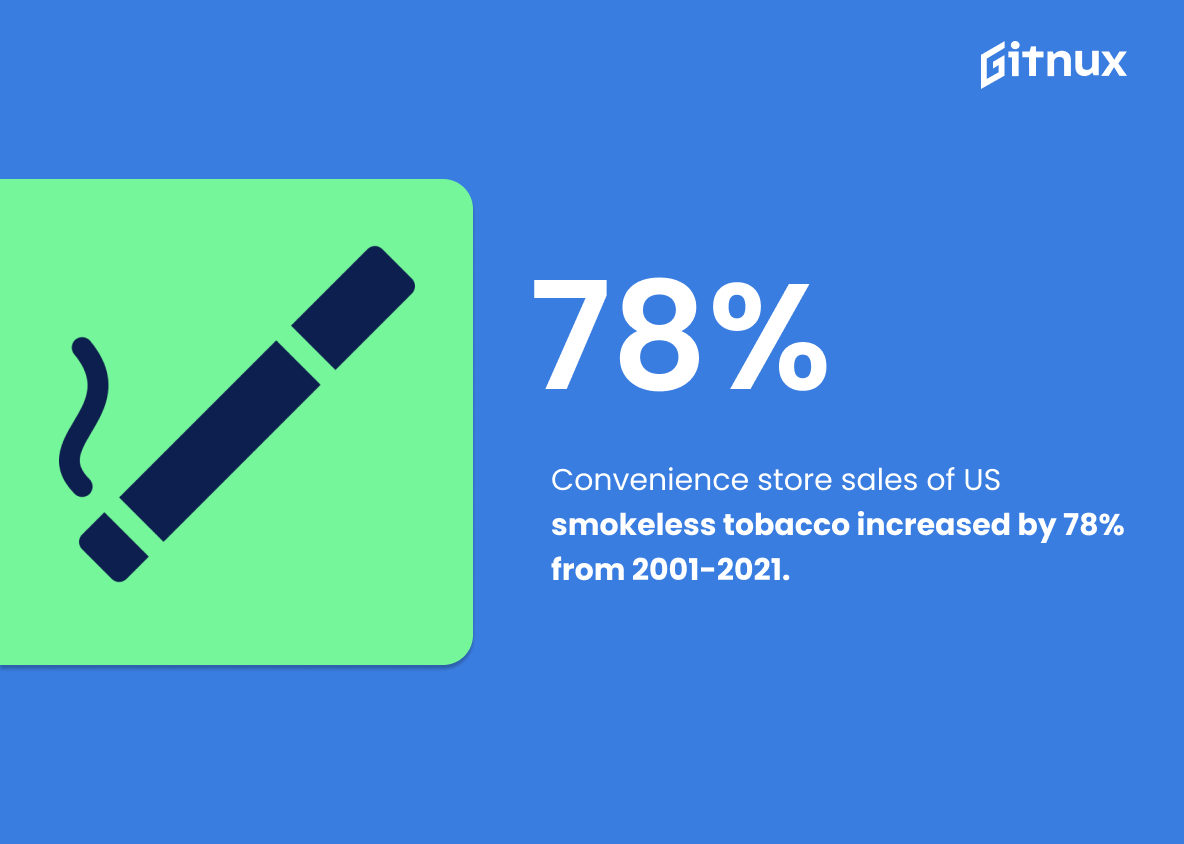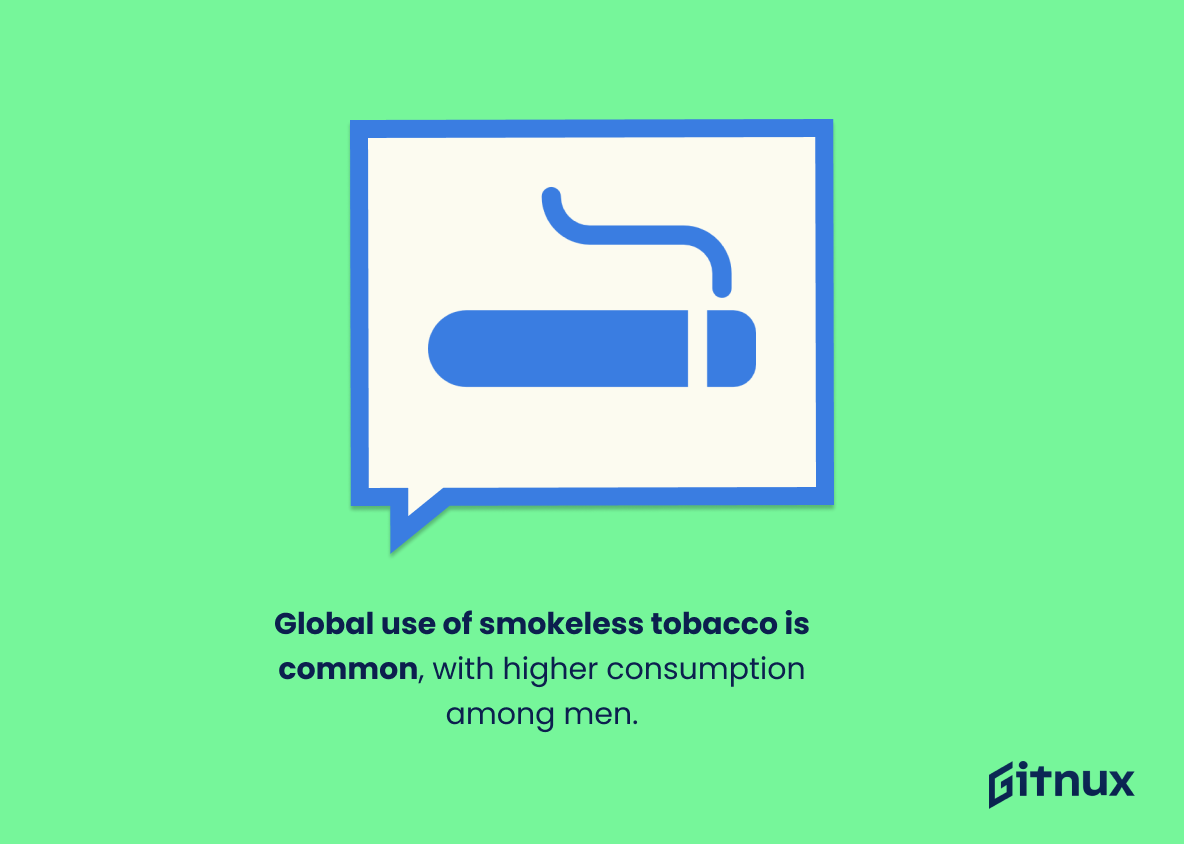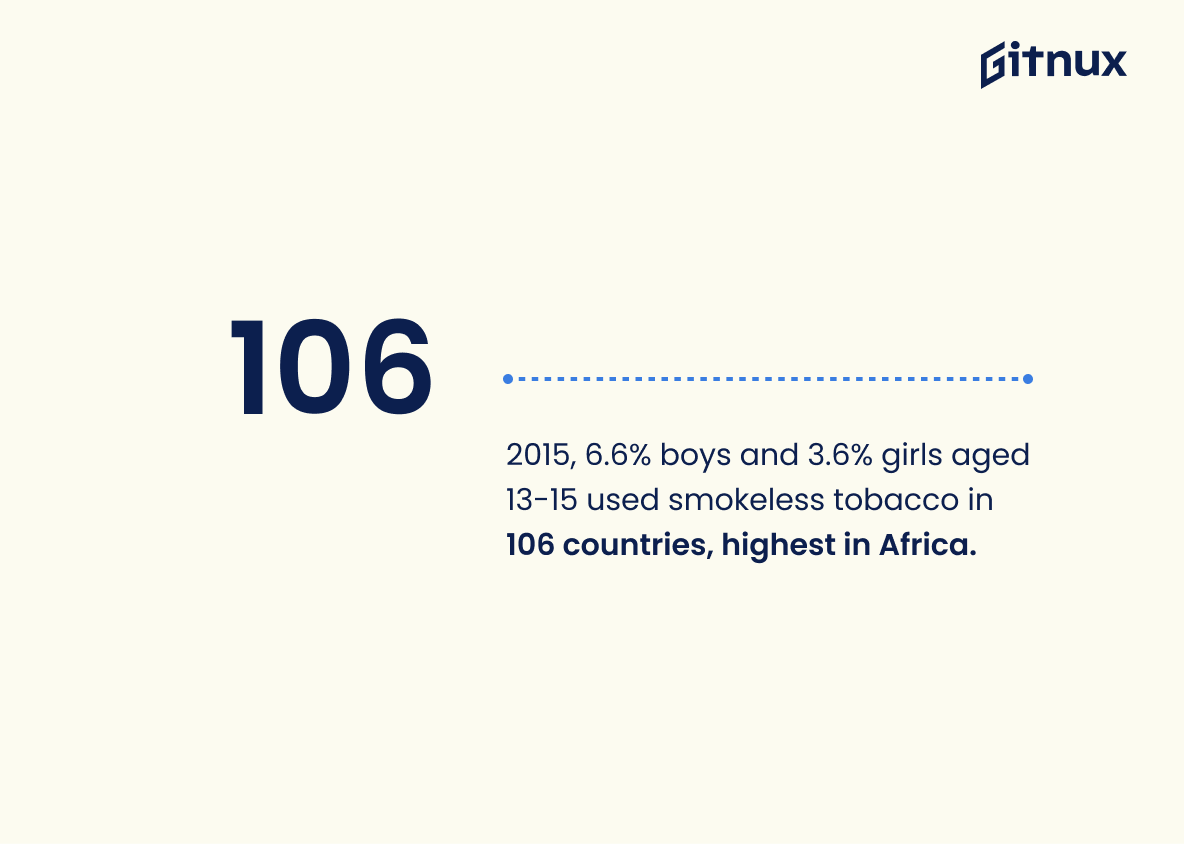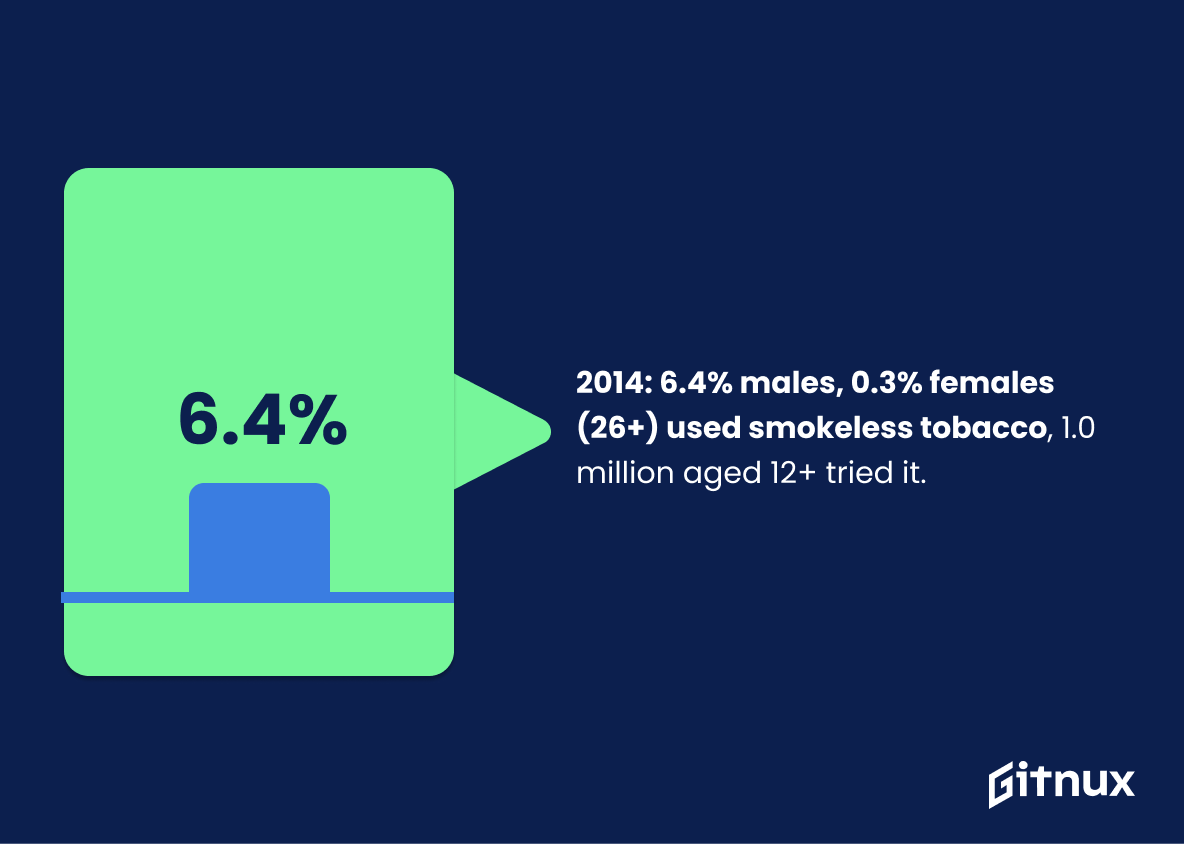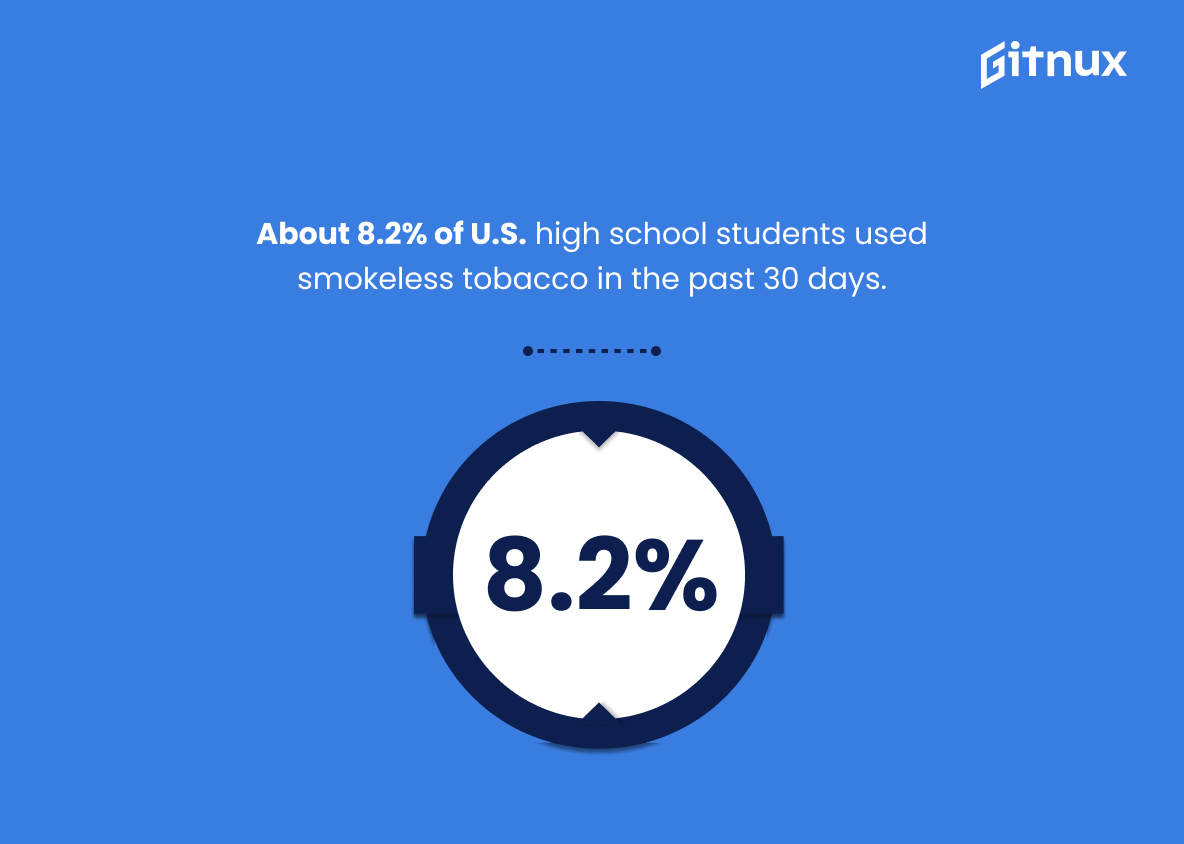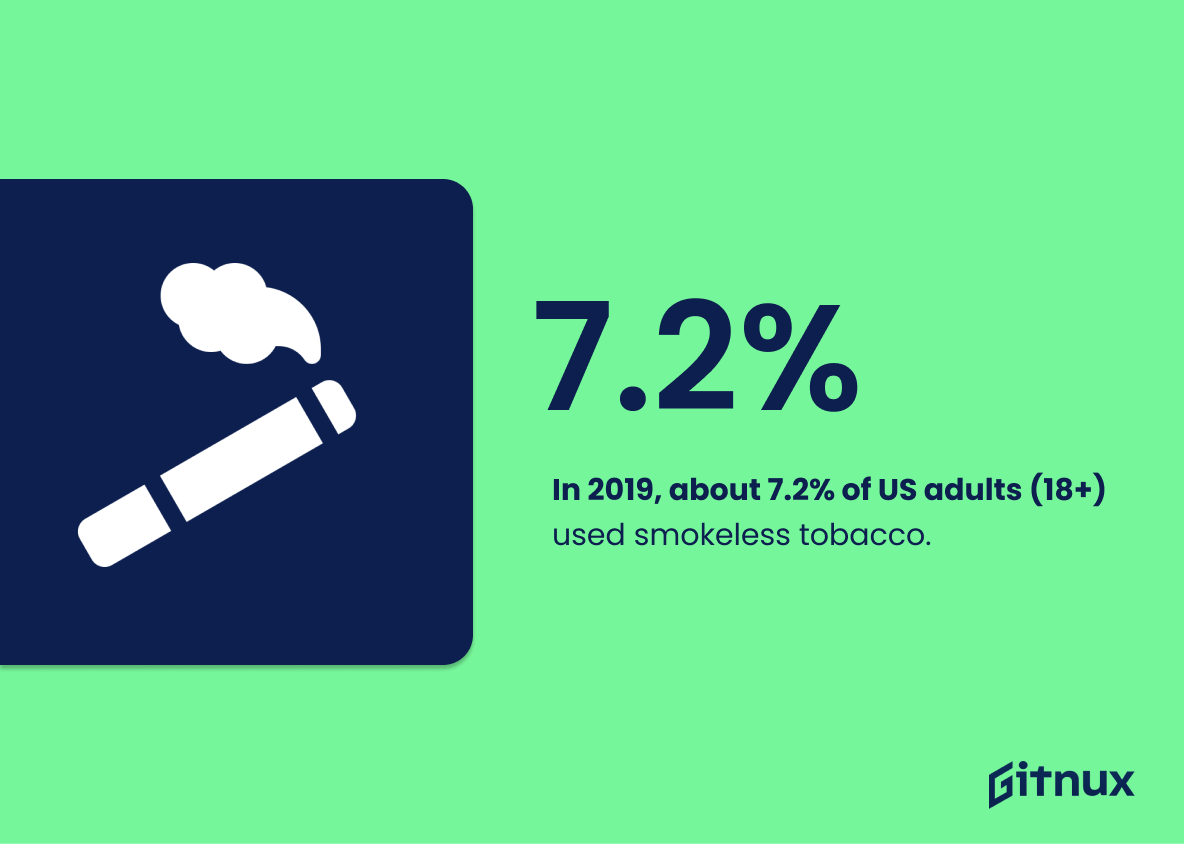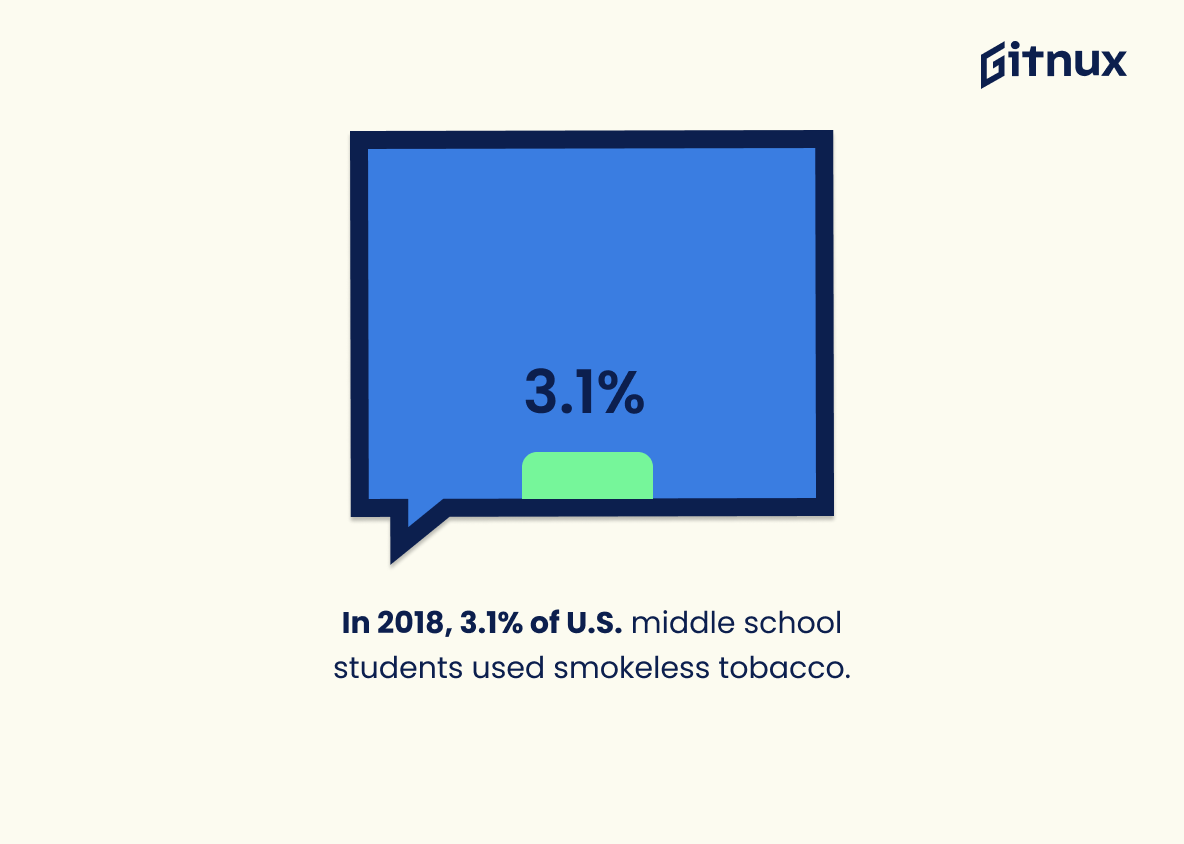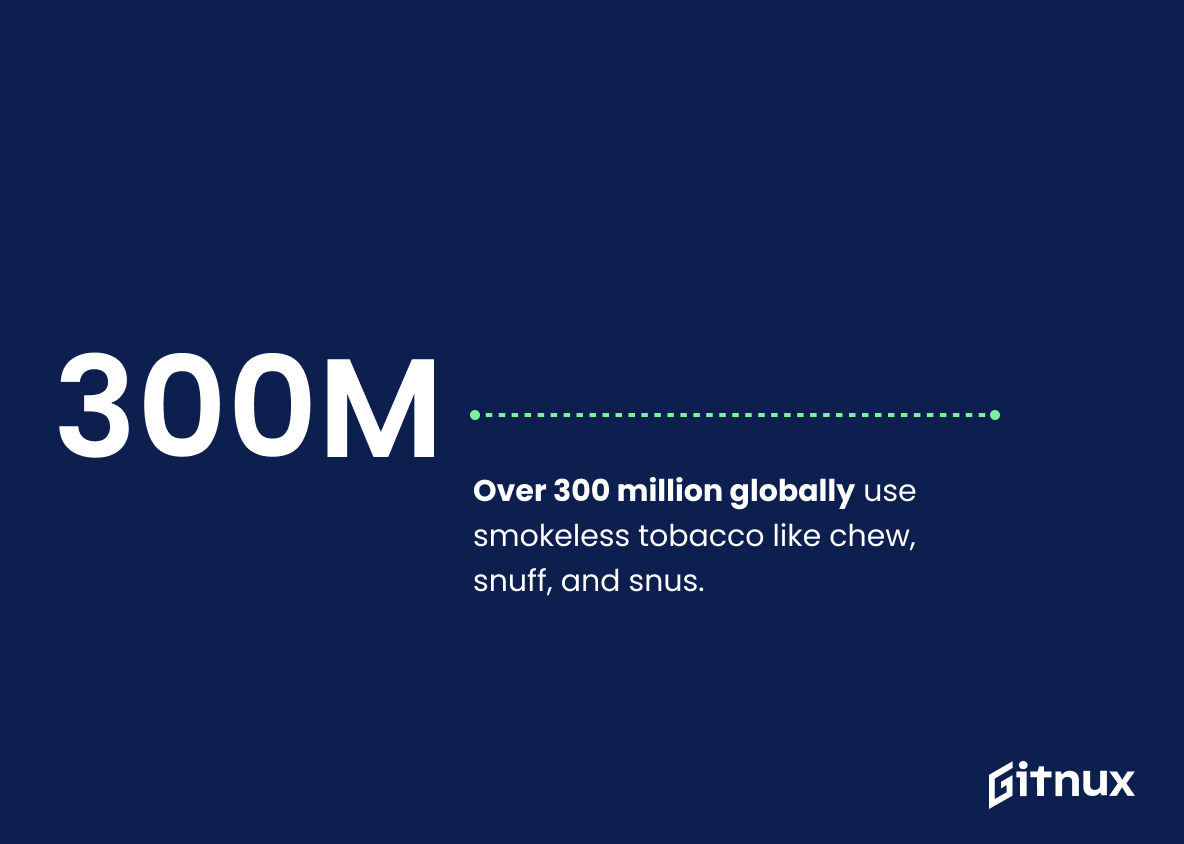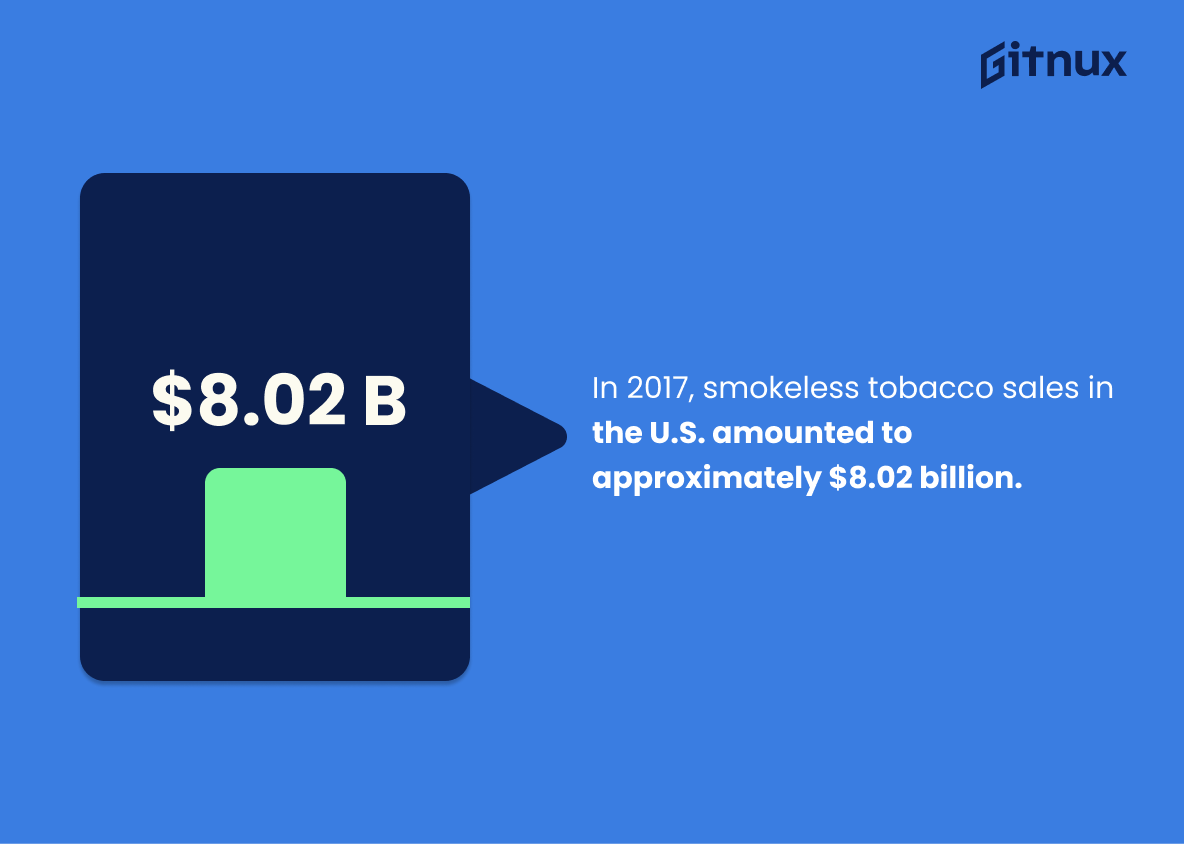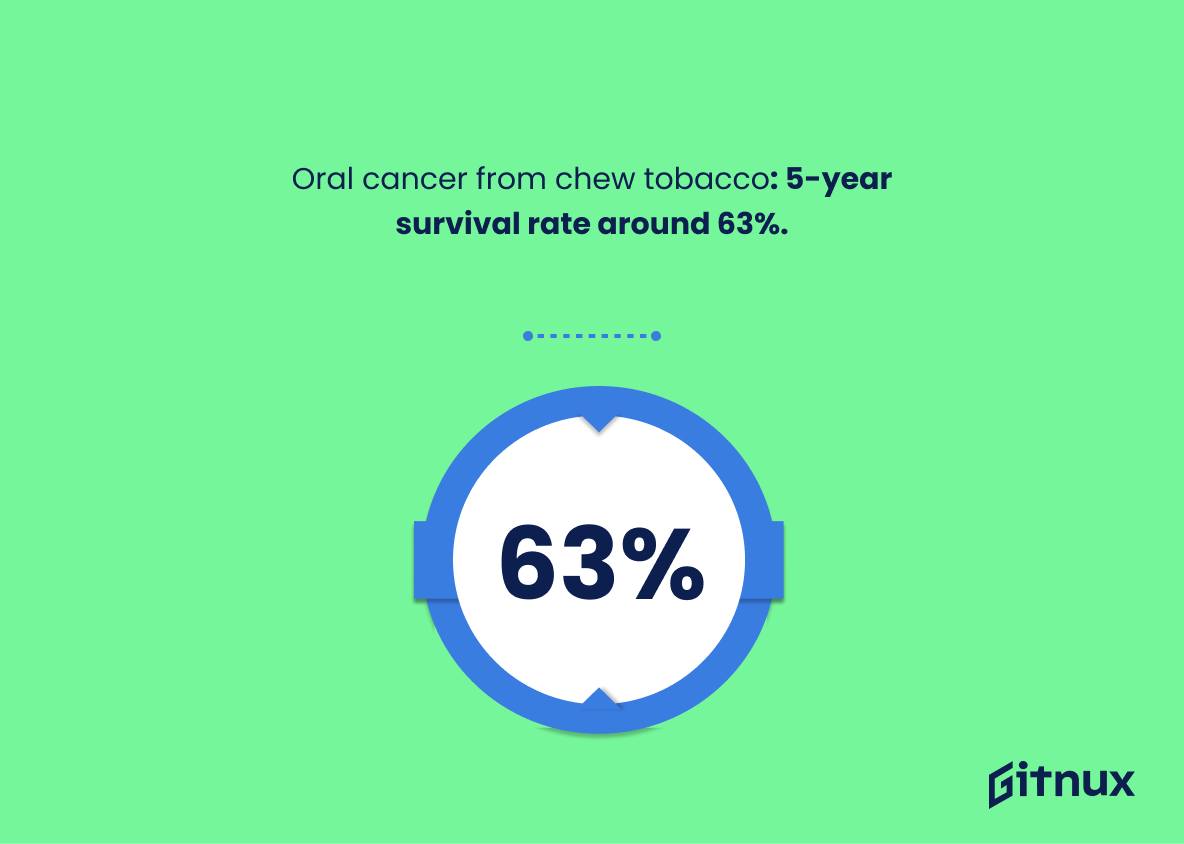Chew tobacco is a product that has been around for centuries, but it has become increasingly popular in recent years. Chew tobacco is a type of smokeless tobacco that is chewed and then spit out. It is often used as an alternative to smoking cigarettes, cigars, or pipes.
While it may seem like a safer alternative to smoking, chew tobacco still carries a number of risks. In this blog post, we will take a look at some of the statistics surrounding chew tobacco use and discuss the potential health risks associated with it.
Chew Tobacco: Most Important Statistics
Smokeless tobacco use is highest among males, African, and colored students, with 12.4%, 12.8%, and 11.7% respectively.
The global smokeless tobacco products market is expected to grow at a CAGR of 7.2% from 2018 to 2025, with the fastest-growing segment being chewing tobacco due to its low and effective pricing and longer time interval than smoke products.
Chew Tobacco: Statistics Overview
Chew Tobacco contains Nitrosamines, a highly carcinogenic chemical, as well as Nicotine, a highly addictive substance, which can cause cancer, heart disease, strokes, and other health risks.
This is associated with the use of Chew Tobacco, and emphasizes the importance of educating people about the dangers of using it.
Chewing tobacco exposes users to the same amount of nicotine as smoking, as well as 25 cancer-causing chemicals.
The high levels of nicotine and the presence of cancer-causing chemicals make it clear that chewing tobacco is a dangerous habit.
The use of tobacco among youth has decreased from 7.9% in 2011 to 3.1% in 2019 and 2.8% in 2020.
Efforts to reduce the use of tobacco among youth are having a positive impact. This is important because tobacco use is linked to numerous health risks, including cancer, heart disease, and stroke.
Therefore, continued efforts to reduce the use of tobacco among youth are necessary to ensure that future generations are not exposed to these health risks.
Smokeless tobacco use is highest among males, African, and colored students, with 12.4%, 12.8%, and 11.7% respectively.
This is associated with preventable morbidity and mortality, and the health care costs associated with tobacco use are significant.
Smokeless tobacco sales decreased from 126.8 million pounds in 2020 to 122 million pounds in 2021, but revenue from those sales rose from $4.82 billion to $4.96 billion.
Despite a decrease in the amount of smokeless tobacco products sold, the revenue from those sales still increased.
This could indicate that the major manufacturers are investing more in advertising and promotion, which is driving up the revenue from sales.
Convenience store sales of US smokeless tobacco increased by 78% from 2001-2021.
This shows the increasing popularity of smokeless tobacco products in the US. This trend is concerning because smokeless tobacco products, such as chew tobacco, contain nicotine and other harmful chemicals that can lead to serious health issues.
The increase in sales of smokeless tobacco products highlights the need for more public health initiatives to reduce the use of these products.
The global smokeless tobacco products market is expected to grow at a CAGR of 7.2% from 2018 to 2025, with the fastest-growing segment being chewing tobacco due to its low and effective pricing and longer time interval than smoke products.
This growth is important as it indicates an increase in demand for chew tobacco products.
Smokeless tobacco is a common product used and sold globally, with men consuming more than women.
Market size was valued at USD 20.35 Billion in 2021 and is projected to reach USD 30.35 Billion by 2030. This shighlights the prevalence of chew tobacco use and the potential for people to switch from smokeless tobacco to smoking tobacco. It also shows the potential for growth in the market, which could lead to more people using chew tobacco.
6.6% of boys and 3.6% of girls aged 13-15 years were current smokeless tobacco users in 106 countries prior to 2015, with the highest prevalence in the African region.
This highlights the increasing use of smokeless tobacco products, which is becoming a growing global health concern.
This is especially concerning in the African region, where the prevalence is highest. Smoke-free policies are needed to address this issue and protect the health of adolescents.
In 2014, 6.4% of males and 0.3% of females aged 26 or older used smokeless tobacco in the past month, while 1.0 million people aged 12 or older used smokeless tobacco for the first time.
Smokeless tobacco use is still prevalent among adults and is increasing among younger age groups. This is concerning because it indicates that more people are being exposed to the health risks associated with smokeless tobacco, such as cancer, heart disease, and stroke.
Supplementary Statistics
Approximately 8.2% of high school students in the United States reported using smokeless tobacco in the past 30 days.
This highlights the need for more education and awareness about the dangers of chew tobacco and the importance of prevention efforts to reduce its use among young people.
About 1 in 14 (7.2%) adults aged 18 years or older in the United States used smokeless tobacco in 2019.
Thus, there is a need for more education and awareness about the dangers of chew tobacco, and the importance of taking steps to reduce its use.
In 2018, about 3.1% of middle school students in the United States used smokeless tobacco products.
It serves as a reminder that the use of these products is not only a problem among adults, but also among children. This statistic is a call to action for parents, educators, and policy makers to take steps to reduce the use of smokeless tobacco products among young people.
Globally, more than 300 million people use smokeless tobacco products such as chew, snuff, and snus.
There is a need for greater awareness and education about the dangers of chew tobacco, and the importance of taking steps to reduce its use.
In 2017, smokeless tobacco sales in the U.S. amounted to approximately $8.02 billion.
It is a powerful indicator of the need for greater awareness and education about the dangers of chew tobacco, and the importance of taking steps to reduce its use.
The 5-year survival rate for oral cancer, which can be caused by chew tobacco, is approximately 63%.
With a 5-year survival rate of only 63%, it is clear that oral cancer caused by chew tobacco can have a devastating impact on an individual’s life.
In 2014, 32.9% of male smokeless tobacco users started using these products before the age of 18.
A large portion of users began using the product before they were even legally allowed to. It serves as a warning to parents and guardians to be aware of the risks associated with chew tobacco and to take steps to ensure that their children are not exposed to it.
Approximately 3.3% of people living in urban areas of India use chewing tobacco.
This statistic is a stark reminder of the prevalence of chewing tobacco in urban areas of India. It highlights the need for greater awareness and education about the dangers of this habit, as well as the need for more effective measures to reduce its use.
5% of 11-18 year-olds in the United Kingdom have tried smokeless tobacco.
The Smokeless Tobacco market is expected to grow at a CAGR of 4.7% during 2021-2026.
This demonstrates the projected growth rate of the industry over the next five years. It is essential for anyone interested in the Chew Tobacco Statistics to be aware of this statistic, as it can provide insight into the potential success of the industry and the potential for investment opportunities.
In 2020, Sweden had the highest per capita consumption of smokeless tobacco, reaching 747 grams annually.
This serves as a warning to other countries that may be considering increasing their consumption of smokeless tobacco, as Sweden’s high per capita consumption could be a sign of the potential health risks that come with it.
Revenue in the Smokeless Tobacco segment is projected to reach US$6,414m in 2021.
It is a key indicator of the industry’s health and provides insight into the potential for future growth. As such, it is an important statistic to consider when discussing chew tobacco statistics.
In 2019, the United States accounted for about 67% of the global smokeless tobacco market share in terms of revenue.
The US is a major consumer of smokeless tobacco products, and that the market for these products is thriving. This is an important point to consider when discussing the health risks associated with smokeless tobacco use, as it shows that the US is a major contributor to the global smokeless tobacco market.
In 2015, 58% of U.S. middle and high school students who used smokeless tobacco products reported using more than one type of tobacco product.
Many students are not just using one type of tobacco product, but multiple, which can lead to more serious health risks. This statistic is an important reminder of the need for more education and prevention efforts to reduce the use of smokeless tobacco products among young people.
In 2014, the use of chewing tobacco in the European Union was highest in Denmark, with a prevalence rate of 3.9% for men and 1.4% for women.
The use of chewing tobacco is still a major issue in the region, with a significant portion of the population engaging in the habit. This statistic is an important reminder that more needs to be done to reduce the prevalence of chewing tobacco in the European Union, and that Denmark in particular needs to take steps to address the issue.
Conclusion
In conclusion, chew tobacco is a dangerous habit that can lead to a variety of health problems. The statistics show that the use of chew tobacco is on the rise, especially among young people. It is important to educate people about the dangers of chew tobacco and to provide resources for those who wish to quit.
With the right education and resources, we can work together to reduce the number of people who use chew tobacco and improve public health.
References
1 – https://www.cdc.gov/tobacco/data_statistics/fact_sheets/smokeless/health_effects/index.htm
2 – https://www.cancer.org/healthy/stay-away-from-tobacco/health-risks-of-tobacco/smokeless-tobacco.html
3 – https://www.cdc.gov/tobacco/data_statistics/fact_sheets/fast_facts/trends-in-tobacco-use-among-youth.html
4 – https://click.endnote.com/viewer?doi=10.2307%2F26767519&token=WzM4NDE2MzMsIjEwLjIzMDcvMjY3Njc1MTkiXQ.D_OQApncdmVv6W9Ql3Odpi6eYyQ
5 – https://www.ftc.gov/news-events/news/press-releases/2023/01/ftc-releases-reports-cigarette-smokeless-tobacco-sales-marketing-expenditures-2021
6 – https://www.statista.com/topics/2500/smokeless-tobacco-in-the-united-states/
7 – https://www.grandviewresearch.com/industry-analysis/smokeless-tobacco-products-market
8 – https://www.verifiedmarketresearch.com/product/smokeless-tobacco-market/
9 – https://bmcmedicine.biomedcentral.com/articles/10.1186/s12916-022-02662-0
10 – https://www.samhsa.gov/data/sites/default/files/report_2740/ShortReport-2740.html
11 – https://www.marketwatch.com
12 – https://www.fda.gov
13 – https://pubmed.ncbi.nlm.nih.gov
14 – https://www.cdc.gov
15 – https://www.statista.com
16 – https://www.who.int
17 – https://ec.europa.eu
18 – https://www.samhsa.gov
19 – https://www.cancer.org
20 – https://ash.org.uk
21 – https://www.imarcgroup.com

